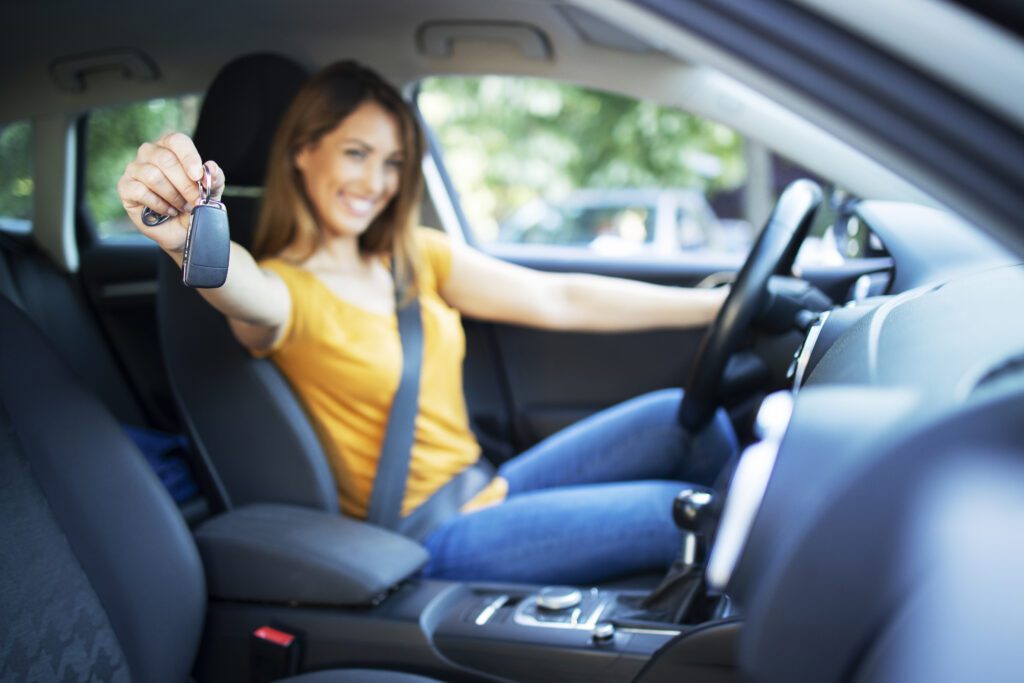
Overview of UK Driving Age Requirements
Legal Minimum Age for Driving in the UK
The legal minimum age to drive a car in the United Kingdom is 17 years old. This applies to individuals looking to operate a car with either automatic or manual transmission.
To begin driving, you need to apply for a provisional licence, which allows them to drive under certain conditions, primarily while accompanied by a fully licensed driver who is at least 21 years old and has held their licence for a minimum of three years.
Differences Between England, Scotland, and Wales
Although the general driving regulations are set and enforced by the Driver and Vehicle Licensing Agency (DVLA) across the UK, there are subtle nuances in how the rules are applied in England, Scotland, and Wales.

The basic age requirements remain consistent; however, local regulations can influence aspects of driving education and the application process for driving tests.
For example, accessibility to rural driving experiences might differ, affecting the learning curve in different regions.
Recent Changes to Driving Age Laws
Recent years have not seen major shifts in the minimum driving age in the UK, but there have been ongoing discussions around road safety and whether the driving age should be raised to help reduce accidents.
These discussions often include considerations of cognitive development and maturity needed for driving, weighing against the independence and mobility that driving offers to young individuals.
Types of Vehicles and Age Restrictions
Age Requirements for Cars
As mentioned earlier, the minimum age to drive a car in the UK is 17 years old. Upon reaching this age, individuals are eligible to apply for a provisional licence and, if successful in passing the theory and practical driving tests, can upgrade to a full driver’s licence.
Age Requirements for Motorcycles
For motorcycles, the rules are more tiered. You can apply for a provisional motorcycle licence at 16 years old, which allows you to ride a moped or light quad bike with a maximum engine capacity of 50cc and a top speed of 45km/h.
At 17 years old, the eligibility expands to motorbikes with an engine capacity up to 125cc and power output of up to 11kW. The Direct Access Scheme (DAS) is available to those aged 24 or over, or those who have held an A2 licence for two years, allowing them to ride larger and more powerful bikes.
Age Requirements for Heavy Vehicles
Heavy goods vehicle (HGV) licences can be obtained from the age of 18 years old, provided that the individual holds a full car licence and passes the additional tests required for larger vehicles.
These include the Category C1 licence, which is for vehicles between 3,500 and 7,500kg, and the Category C licence, for vehicles over 7,500kg.
For drivers looking to handle even larger vehicles or those with trailers, further specific tests and licences are required.
Getting Started: Provisional Licences
How and When to Apply for a Provisional Licence
To begin driving, an individual must first obtain a provisional licence. The application for this licence can be made once a person is 15 years and 9 months old, though they cannot start driving until they turn 17.
The application can be completed online at the DVLA website or by filling out a D1 form from the Post Office.

It’s advisable to apply within the three months leading up to your 17th birthday, so you can start driving as soon as possible after reaching the legal minimum age.
Required Documentation for a Provisional Licence
When applying for a provisional licence, several pieces of documentation are required. Applicants must provide a form of identification:
- Typically a passport
- Proof of residency if not a British citizen
- Proof of address.
They must also meet the minimum eyesight requirement and declare any medical conditions that might affect their driving.
“The legal eyesight standard means that you must be able to read a number plate from 20 metres. You must not have been told by a doctor or optician that your eyesight is currently worse than 6/12 (decimal 0.5) on the Snellen scale.”
A colour passport-style photograph must also be submitted with the application.
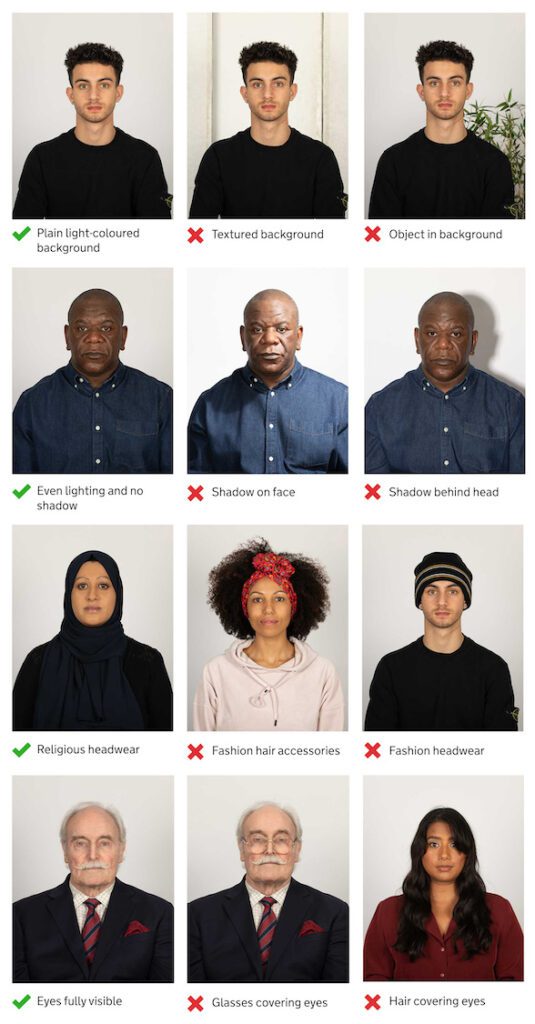
Image source: Open Government Licence v3.0
Restrictions While Holding a Provisional Licence
Holding a provisional licence comes with certain restrictions to ensure the safety of the learner and other road users.
The licence holder must be accompanied by a driver who is at least 21 years old and has held a full driving licence for at least three years.
The learner must display ‘L’ plates on the front and rear of the vehicle in a clear and visible manner.
They are also prohibited from driving on motorways and from carrying passengers other than the supervising driver.
The Learning Process
Recommended Hours of Instruction
The DVLA recommends that learner drivers undertake approximately 45 hours of professional instruction, along with about 22 hours of private practice to gain experience and confidence on the road.
This combination of professional lessons and private practice helps to cover the diverse aspects of driving skills required to be a competent driver.
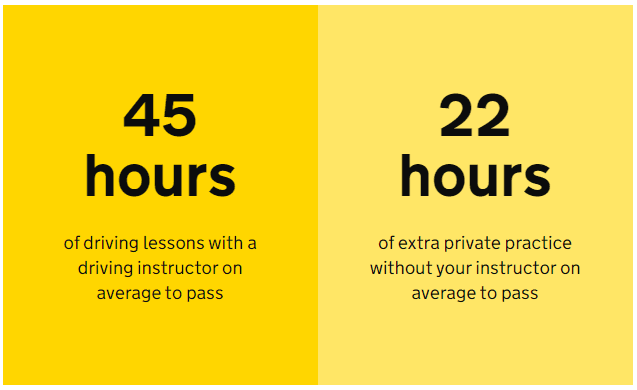
Choosing Between Professional Lessons and Private Practice
Deciding between professional lessons and private practice involves considering various factors such as cost, learning style, and access to a suitable vehicle.
Professional instruction is beneficial for learning the correct techniques and understanding the nuances of UK driving laws and practices.
However, private practice is invaluable for gaining experience in real-world conditions and for increasing confidence behind the wheel. Ideally, a mix of both is recommended to ensure comprehensive driving skills development.
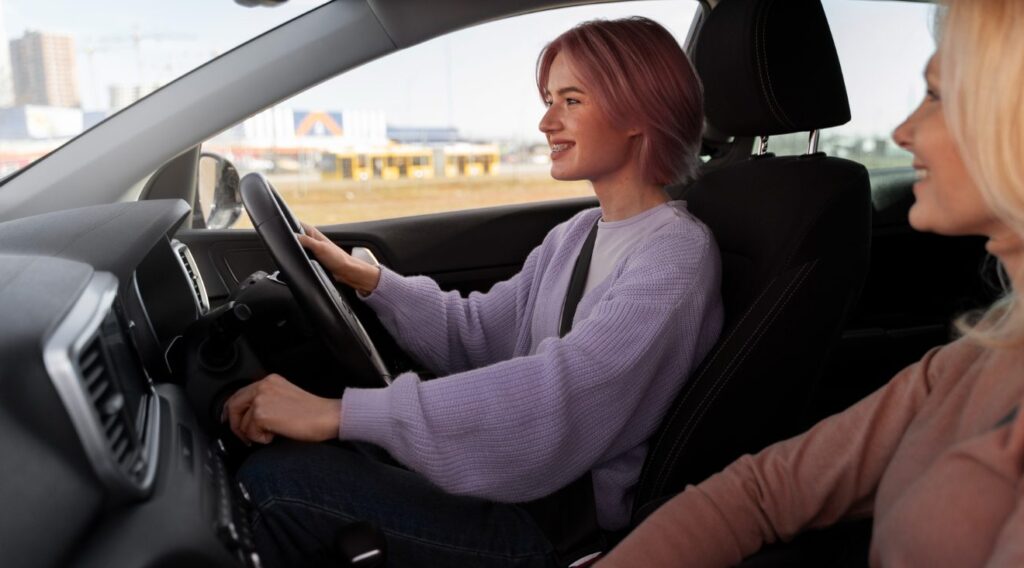
The Importance of Learning Road Safety Early
Road safety education is crucial and should begin early in the learning process. Understanding the rules of the road, the behaviour of other drivers, and the potential hazards can significantly reduce the risk of accidents.
Learners who prioritise road safety from the outset are generally better prepared for their practical tests and for safe driving in the long term.
This early emphasis on safety helps instil a mindset that prioritises caution and awareness, which are essential for navigating the complexities of modern roads.
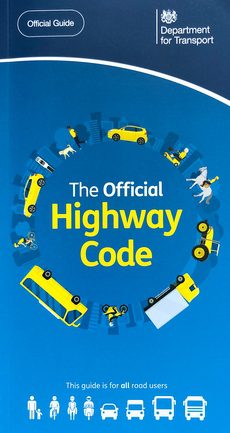
Passing the Driving Test
Components of the UK Driving Test
The UK driving test consists of two main components: the theory test and the practical test. The theory test is designed to assess your knowledge of the Highway Code, road signs, and essential driving skills through multiple-choice questions and a hazard perception test.
The practical test evaluates your ability to drive safely and competently in various road and traffic conditions. This includes an eyesight check, ‘show me, tell me’ vehicle safety questions, and about 40 minutes of driving which involves a section of independent driving and possibly performing reversing manoeuvres.
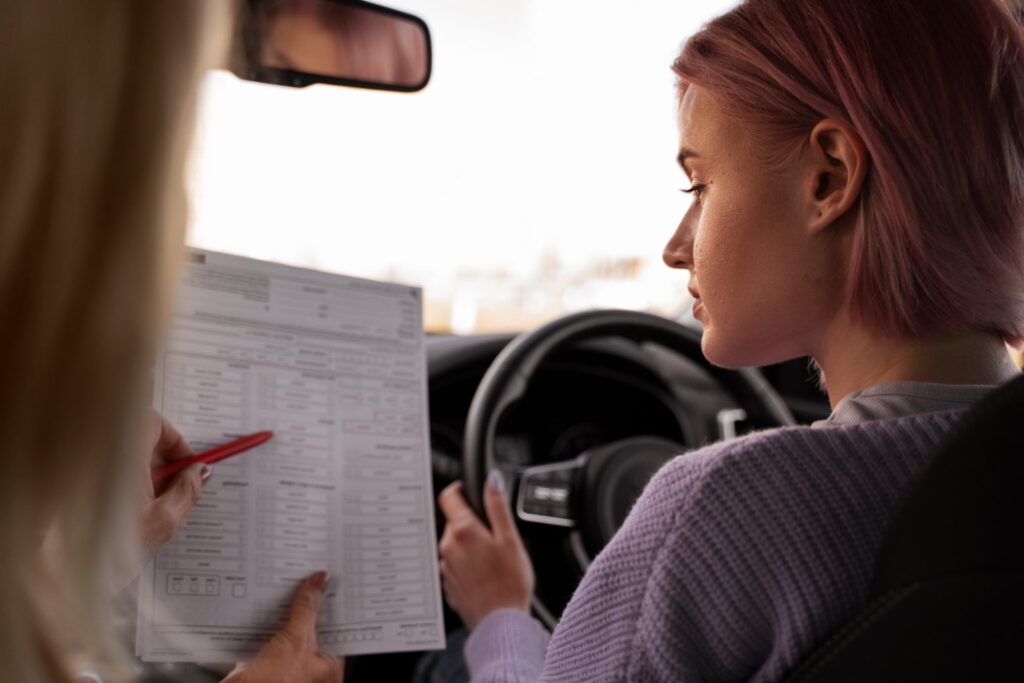
Tips for Passing the Theory Test
To successfully pass the theory test, it is crucial to thoroughly study the Highway Code, understand road signs, and practice hazard perception skills.
Using online resources and apps designed for theory test preparation can be extremely helpful. Regular practice tests can aid in familiarising yourself with the format of the questions and help identify areas where further study is needed.
Tips for Passing the Practical Test
For the practical test, it is essential to have enough driving experience to feel confident in a variety of driving situations.
Before the test, make sure to have practice sessions in the area around the test centre to familiarise yourself with the types of roads you may encounter.
On the day of the test, remain calm, listen carefully to the examiner’s instructions, and remember the training you’ve received. Showing confidence, good judgement, and safe driving practices are key to passing the practical test.
After Getting a Full Licence
Restrictions and Conditions for New Drivers
Once a new driver has passed their practical test and obtained a full licence, they are still subject to certain restrictions under the New Drivers Act.
For instance, if a new driver accumulates six or more penalty points within two years of passing their test, their licence will be revoked.
They will need to apply and pay for a new provisional licence and pass both the theory and practical tests again to regain their full licence.
Read the benefits of have ‘P’ plates after passing your driving test
Impact of New Driver Act on Recently Qualified Drivers
The New Driver Act serves as a probationary period to encourage safe driving habits among newly qualified drivers.
The implications of having their licence revoked can be significant, not only in terms of the inconvenience and additional cost but also the potential impact on employment and personal mobility.
This underscores the importance of adhering to traffic laws and driving safely during the initial years of driving.
Continuing Education and Advanced Driving Courses
Continuing education through advanced driving courses is highly recommended for new drivers.
Courses such as Pass Plus or an Advanced Driver course offered by organisations like the Institute of Advanced Motorists or the Royal Society for the Prevention of Accidents provide further training.

These courses cover aspects such as night driving, all-weather driving, and driving on motorways, which are not thoroughly covered in the initial driver training.
Not only can these courses improve driving skills and safety, but they may also lead to reduced insurance premiums.
Frequently asked questions
You can apply for a provisional driving licence when you are 15 years and 9 months old, but you cannot start driving a car until you are 17.
No, when you have a provisional licence, you must be accompanied by a qualified driver who is at least 21 years old and has held a full driving licence for at least three years.
With a provisional licence, you can drive a car under supervision and ride a moped or light quad bike if you are at least 16 years old.
You can book a theory test online via the official DVLA website, or through third-party booking services, though these may include additional fees.
You need to bring your provisional driving licence and the confirmation email or letter for your test appointment.
If you wear glasses or contact lenses, bring those as well since you’ll need to pass an eyesight check.
The practical driving test usually lasts about 40 minutes. This includes time for an eyesight test, safety questions, and general driving ability assessment.
If you pass your driving test, you will be issued a pass certificate, and your full driving licence will be sent to you by the DVLA.
If you accumulate six or more penalty points within two years of passing your driving test, your licence will be revoked under the New Drivers Act. You will need to reapply for a provisional licence and pass both theory and practical tests again.
Yes, completing an advanced driving course can improve your driving skills, make you a safer driver, and often lead to lower car insurance premiums.
Yes, you can usually drive on a valid foreign driving licence for up to 12 months from the date you become a resident in the UK.
After that, you will need to exchange it for a UK licence or pass the UK driving test.


